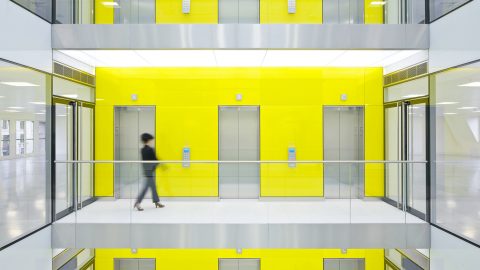According to the latest research the industrial and commercial LED market is set to grow rapidly in the next half decade. The report by the Transparency Market Research has looked at the LED lighting industry globally and has estimated growth of 30% from 2013-2019. These calculations have been driven by analysing global trends, industry forecasts and LED’s current and future share of the lighting market.
One of the key drivers of this growth is changing attitudes towards LED lighting, particularly at government level where initiatives have been undertaken to move industrial and commercial environments away from incandescent bulbs towards cleaner LED. This attitudinal shift has been especially visible in Europe, so unsurprisingly in 2012 Europe was the largest market globally for industrial and commercial LED lighting.
The reasons behind this change are largely attributable to the higher efficiency and durability of LED lighting over conventional incandescent lighting. Even with government bans placed on the older technology however, other lighting, particularly fluorescent remains a popular choice for industrial and commercial environments as the initial costs of LED can be off-putting for many.That said, as the market matures, designers and architects are becoming better educated about the longer term value proposition that LED offers; long lifespan and better performance.
Greggs recently opted for all LED lighting.
This greater appreciation for the value of LED is already becoming evident in industrial and commercial sectors. In another recent piece of research compiled by Pike Research it was forecast that by 2021, the market share for LED in the commercial sector would reach 52%. With the platform of support for, and adoption of LED lighting built, the achievement of this forecast will be largely reliant on an overall price reduction for LEDs, believed by many to be the last major hurdle for LED before becoming the dominant technology in the lighting market.
Historically we have seen how technologies evolve and become cheaper over time either through finding efficiencies in the manufacturing process or through the costs of components coming down. This is a trend we have seen in the lighting industry already, think about the way white LEDs have evolved since the nineties, how much they have fallen in price over time and how ever evolving technologies are set to make them cheaper in the future.
Undoubtedly industrial and commercial LED lighting still has some way to go. While in Europe the abandonment of incandescent bulbs has given LED a welcome gap in the market, there are still other lighting technologies out there and, globally not all governments are pushing changes in lighting behaviour so actively. That said, as more users start to realise the benefits that LED lighting offers and are more willing to see the longer term value, then adoption is set to continue at pace.
LED lighting solution for Sainsburys by GE Lighting
